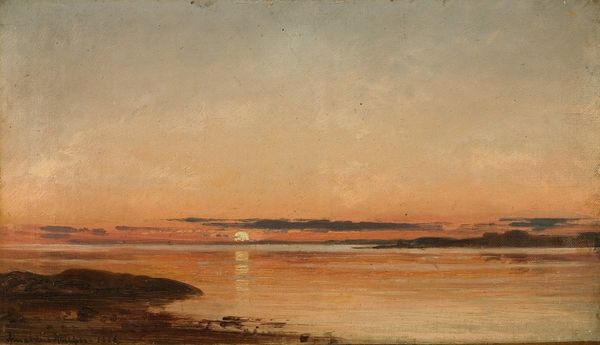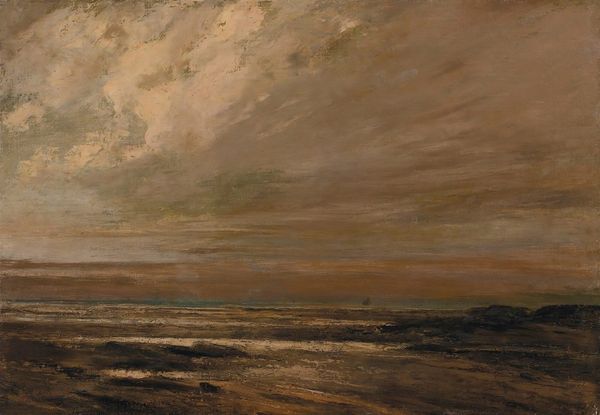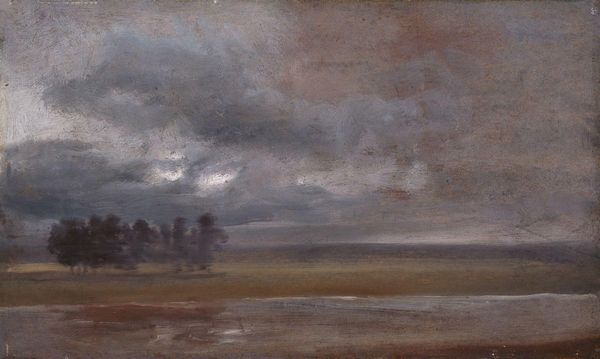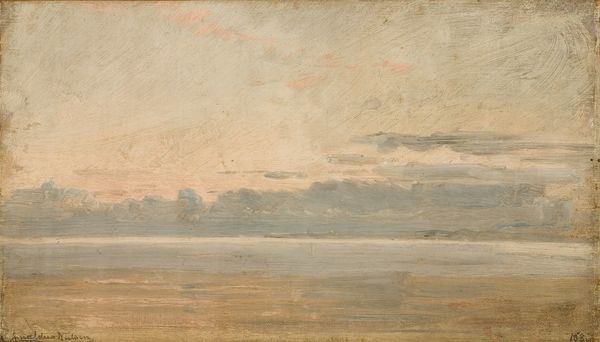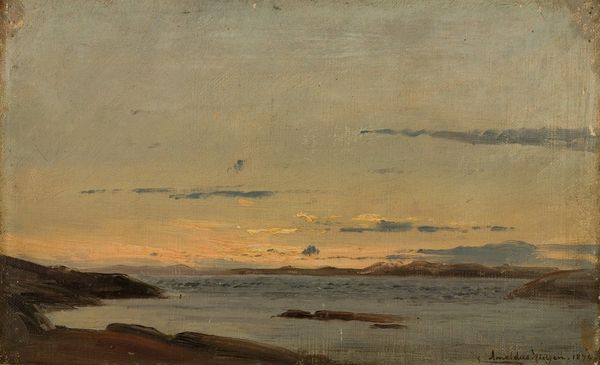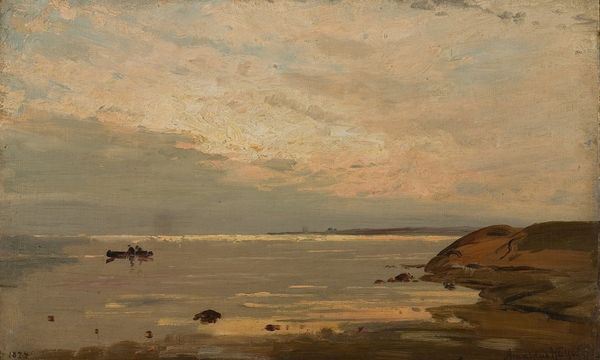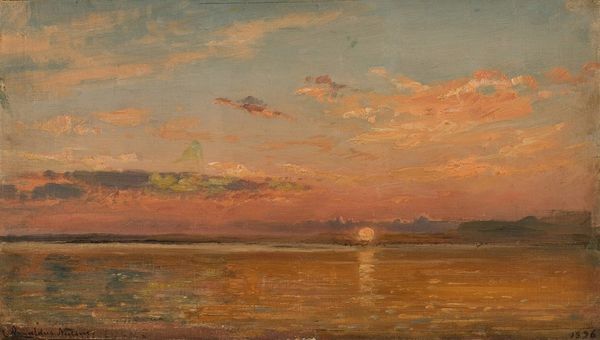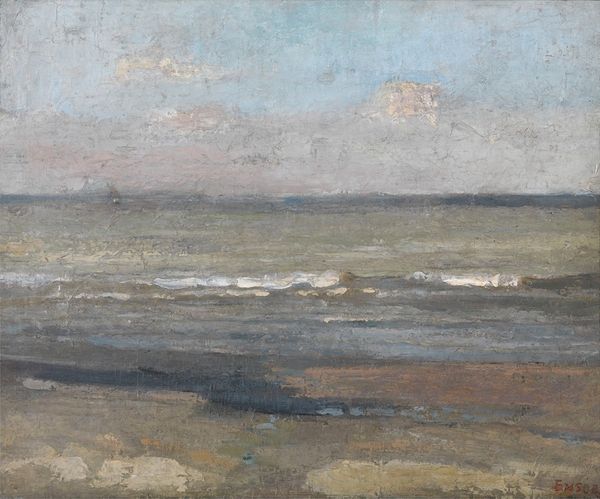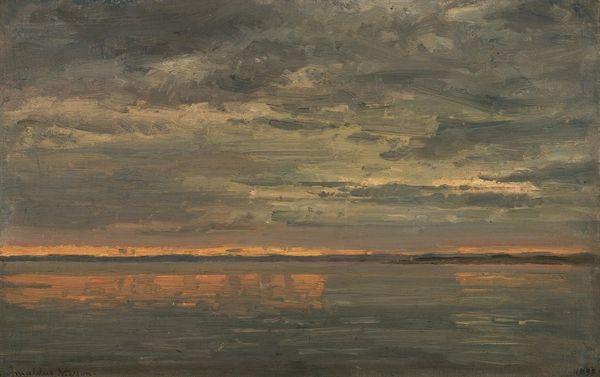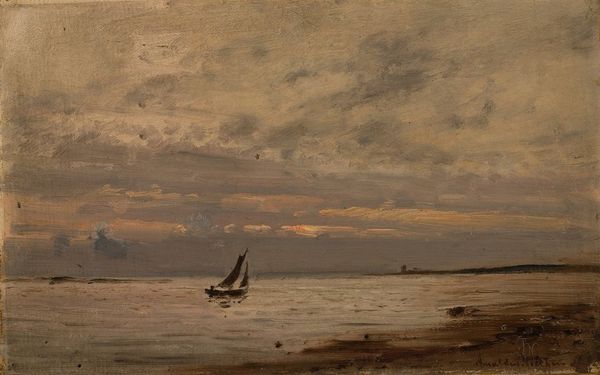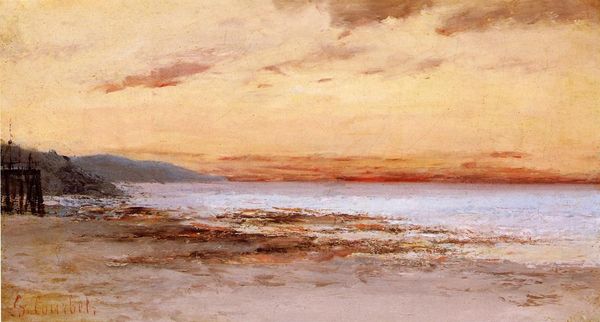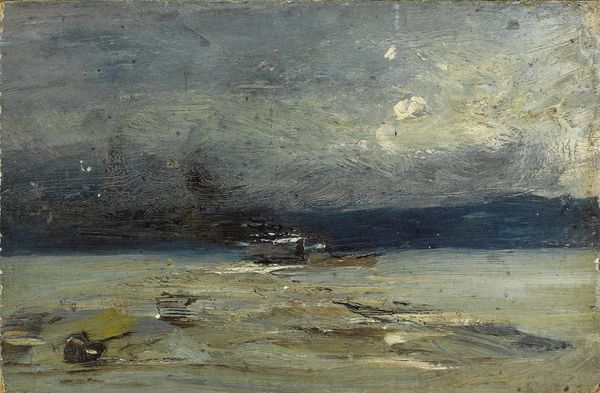
plein-air, oil-paint
#
plein-air
#
oil-paint
#
landscape
#
impressionist landscape
#
oil painting
#
romanticism
#
watercolor
Copyright: Public Domain: Artvee
Curator: What a somber sky! There's something deeply melancholic about the light diffused by those heavy clouds. Editor: Indeed. We're looking at Johan Christian Dahl's "Study on the Elbe," an oil painting circa 1833. Dahl, a leading figure of the Romantic era, captures the river Elbe here. Curator: The composition is quite striking. Notice how the broad horizontal bands—the land, the river, and the sky—create a sense of expansiveness, almost infinite space. And the layering of color! Look at the way the golds peek out from beneath the grays. Editor: That layering you’re noticing, it reflects the broader artistic trend of the period – specifically the move towards en plein air painting, an artistic decision based less on perfect representation, and more based on the momentary sensory details of place. One begins to wonder who exactly got access to these sensorial details during this moment in time. Curator: Absolutely, though one cannot dismiss the aesthetic impact entirely due to this politicization! The loose brushwork gives the sky an almost palpable texture. It's as if you can feel the dampness in the air. And how light catches the water’s surface! It is hard to ignore the masterful manipulation of light in this work. Editor: It's interesting how a scene with such muted tones can still evoke a powerful sense of place, and moreover the complex socioeconomic conditions for landscape painters during this time. Romanticism was, in a way, funded and furthered by the bourgeoise, who romanticized about these spaces in opposition to rapidly expanding industrial and urban locales. This wasn't necessarily Dahl's individual project; he was also the head of Dresden's Academy, but the aesthetic lineage nonetheless had specific origins worth noting. Curator: I appreciate the social dimension you highlight; yet to fixate entirely on the social, would obfuscate what truly draws viewers in this piece. We witness that drama of color contrast and the deliberate structure to understand the emotional resonance of this place. Editor: A compelling point. Perhaps in looking closer at artworks like these, we may never entirely come to one single source of knowledge for a singular moment in time. Instead, we build layers that contextualize how it might matter across shifting periods and populations. Curator: A wonderful, enriching tension to keep us exploring more.
Comments
No comments
Be the first to comment and join the conversation on the ultimate creative platform.
